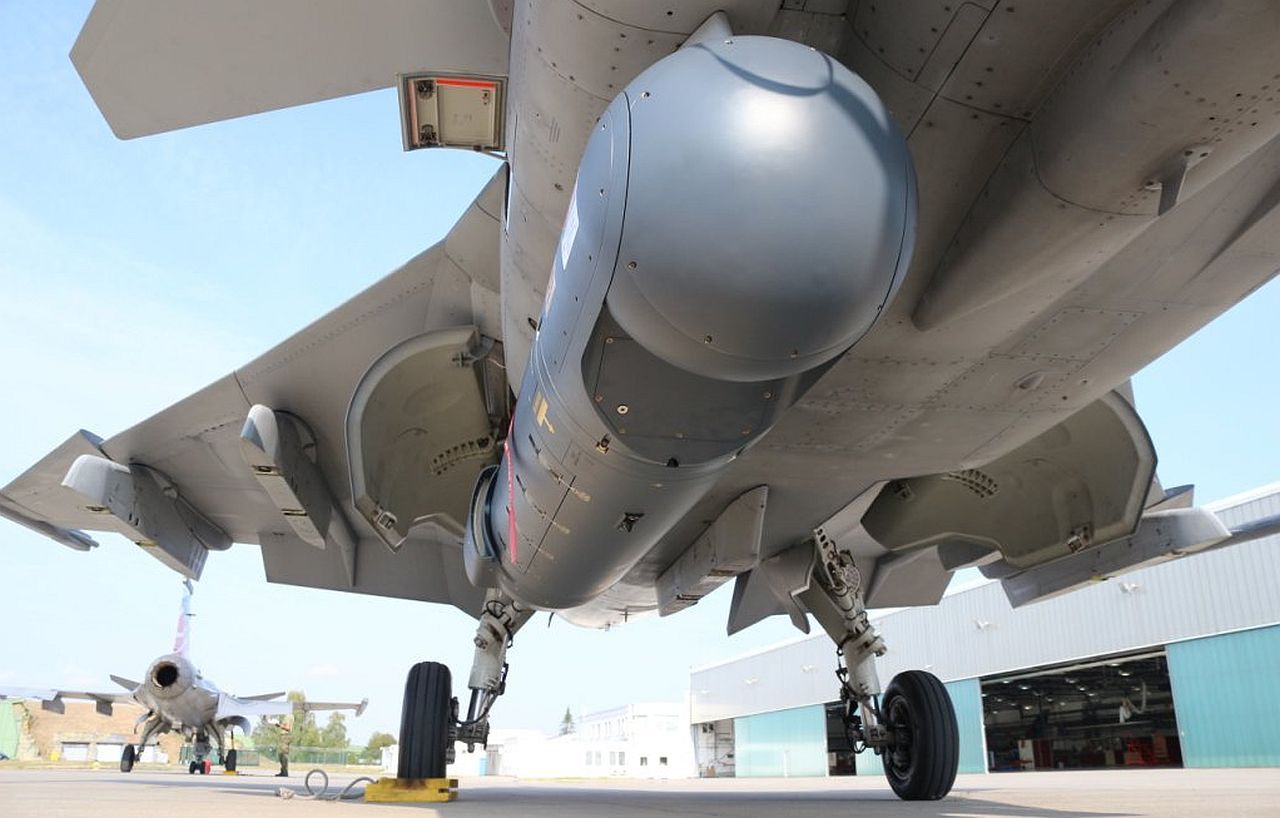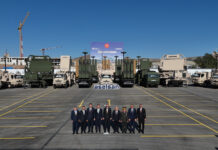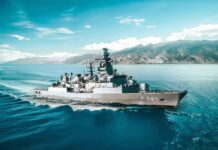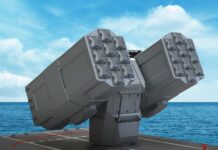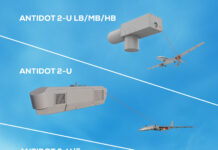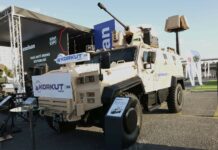Passive IRST (infrared search and track) sensors – whether built-in or in podded solutions – are an essential element of modern and future combat aircraft. IRST is a form of FLIR (forward looking infrared) that tracks individual targets, generally for weapons guidance or linked recce, while FLIR alone just ‘sees’ infrared heat signatures. Passive automatic search, detection and tracking functions are key elements in silent operations or tactical scenarios saturated with enemy jamming, such as Ukraine.
This article focuses on podded multi-role IRST systems. At the outset, and to set the record straight, it was not the Russians who ‘invented’ IRST systems, since the first system was an upgrade of the USAF F-101B Voodoo, which received the sensor from the cancelled F-108 Rapier fighter (1956). The subsequent F-102 Delta Dart and F-106 Delta Dagger interceptors both had IRST systems, as did several versions of the F-4 Phantom II. It was only later that the US ‘Teen Series’ fighters (F-15, F-16, F-18s, as well as European aircraft), which abandoned IRST systems, since it was felt that the increasing sophistication of aircraft radar systems made IRST redundant. The sole exception was the still much-bemoaned F-14 Tomcat, fitted with an extremely sophisticated IRST, since it was expected to operate in extreme jamming environments.
That is the reason why many fighters and especially the older ones, from their conception did not have the space to fully install IRST devices, as with the PIRATE system on the Typhoon, the OLS-series on Russian fighters, or today on F-15K/SA, F-16/60, F-18E/F III, F-35, Gripen-E’ or Rafale. To provide these earlier aircraft with that capability when it was later deemed urgent, the IRST equipment was housed in an external pod mounted to the fuselage or wing weapons rails. The ‘only’ modifications to the plane was new video-wiring to the cockpit display, as with Rafael’s Litening-V targeting pod on the Austrian Tranche-1 Typhoons.
Abilities and limitations
IRST works by scanning the sky for an IR signature, and when it locates one or more, it locks on for weapons tracking and guidance. Modern systems are usually equipped with an autonomous inertial navigation system (INS) that automatically calculates the angle of deviation of the target from the longitudinal axis (boresight) of the carrier aircraft. Furthermore, it provides high targeting accuracy, even under high dynamic G-loads. However, IRST is not magic and cannot fully replace radar, but it can pull off some very neat tricks, including giving a passive lock for air-to-air missiles (AAMs) and not triggering the targets’ radar warning receiver (RWR). Maybe the most promising trick is spotting low-observable aircraft without using radar. Yet, while modern IR sensors are becoming sensitive, no one is going to launch a Meteor missile on IRST alone at >100 km range, or even obtain a dynamic launch zone on IRST at 100 km. The performance of IRST depends on several factors, mainly clouds, humidity, time of day (which relates to atmospheric temperature), target altitude, relative bearing, throttle setting, and aircraft structural composition in respect to thermal conductivity. A higher humidity negatively effects their performance, independent of temperatures.
Another issue is their need for cooling. Cooling is good for the sensitivity of IR detectors and reduction of noise with the signals, but is operationally inconvenient. Sensors may for example be cooled by cryogenic liquid or by cryogenic liquified gas. As cryogenic liquid is an expendable consumable, and could run out during a mission, it definitely needs to be serviced before each flight. Non-cryogenic cooling for IR-detectors can also be done with Peltier semi-conductor coolers operating on electrical power, more convenient in design as well as operation.
Litening Pods
With 26 user nations and 28 aircraft, the Israeli Rafael’s Litening-family no doubt became the most widespread system of this type, since its first versions were introduced more than 20 years ago. The system’s development programme ran from 1992 until 1999, when the successor Litening II entered service, proving its worth by competing directly with the AN/AAQ-13/14 LANTIRN targeting pod with the thousandth pod sold in October 2010. The Litening V is the latest of the family, and equipped with two small and medium-wave FLIR sensors. Previous versions, including the Litening III are nevertheless still in production.
hese usually have a third-generation FLIR sensor (3-5 micron), medium waveform and a resolution of 640 x 512 pixels. It can provide a wide (18.4° × 24°), medium (2.8° × 2.8°) and narrow (0.77° × 0.77°) field of view (FOV). The daytime camera (CCD sensor) provides a resolution of 659 (horizontal) × 494 (vertical) pixels with a FOV of 3.5° × 3.5° degrees, while a second is available with a smaller FOV of 0.7° × 0.7°. Its American coding is AN/AAQ-28 and since 1995 Northrop Grumman (NG) is in cooperation with Rafael, carrying out production in the US and promotion to the US Armed Forces. NG delivered more than 700 pods to the USAF, USMC and Spain, Italy, Australia, the Netherlands, Portugal, Finland and Denmark.

Credit: Czech Air Force
The air-to-air mode is well documented, including for example with videos of intercepted Russian aircraft in the Baltics, filmed at BALTOPS by a Czech Gripen. The Czechs have bought four of the previous version Litening-4i (fitted with ZEISS Optronics) pods in 2018 for CZK 325 M (EUR 13 M) – and reportedly want more. They also operate it on the L-159 ALCA. This model features colour symbology, tracker improvement and enhanced zoom compared to prior versions. Czech Air Force Commander Maj.Gen. Petr Mikulenka explained last year to the author: “Although it is primarily a tool for launching accurate attacks on ground targets, it was used there to improve the ability to visually observe aircraft day and night, which means that thanks to optical technology, Czech pilots are now able to track suspicious aircraft at very long distances and predict their behaviour…” Elsewhere, 150 units of Litening-4 were ordered by the Indian Air Force, demonstrating Rafael’s versatility with integrating them into platforms such as the Su-30MKI or MiG-29UPG.
The UK’s RAF Typhoons used the Litening III pod, originally carried by the service’s Panavia Tornado GR4s, which were retired in April 2019. With two crewmembers, the GR4s could dedicate their weapon systems officer to working the targeting pod, but this imposed a greater workload on the single pilot of a Typhoon. Now the Litening V has entered service early last year with the RAF’s No 41 Test and Evaluation Squadron (TES) for around 18 months for ‘minor tweaks’ and to clear it for squadron service. TES staff at RIAT 2022 were convinced that the auto-tracking, accuracy, co-ordinate generation and advanced optics “will get better by an order of magnitude…”
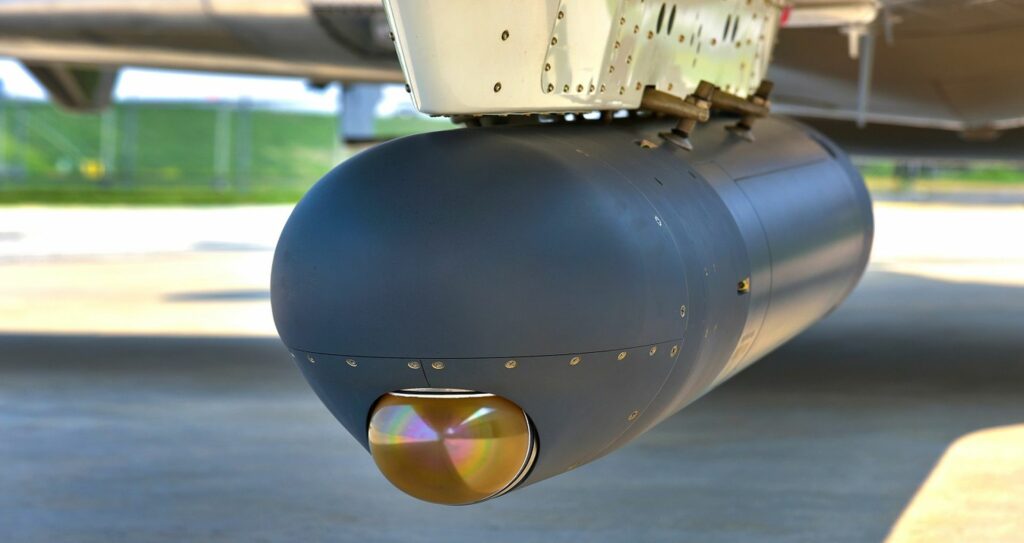
Credit: Northrop Grumman
As an evolution to Litening, Northrop Grumman has also developed the OpenPod based on the aforementioned AN/AAQ-28(V). Any Litening pod can be converted to an OpenPod and sensors are advertised as being capable of being swapped out without modifications to the aircraft or its mission computer. It was presented as a future solution providing targeting, communications, and LIDAR, with the integration of IRST technology developed in Europe for the Typhoon’s PIRATE and the Gripen’s SkyWard – the latter a SELEX (now Leonardo) design. The OpenPod was discussed for the Hellenic Air Force’s F-16 upgrade.
Legion pod
IRST21 (also known as AN/ASG-34) is the next-generation IRST sensor by Lockheed Martin’s Missiles and Fire Control segment in Orlando, FL. It builds on the legacy AN/AAS-42 IRST sensor system, which accumulated over 300,000 flight hours on F-14 and international F-15 platforms. As a compact design, it enables IRST21 to be integrated in a variety of ways. On the F/A-18E/F, IRST21 is mounted on the nose section of the centreline fuel tank, (hopefully never in need to be jettisoned). A 16 inch (406 mm) diameter structure podded sensor system with IRST21 is also being introduced as the Legion pod and will be transferable across a wide range of platforms.
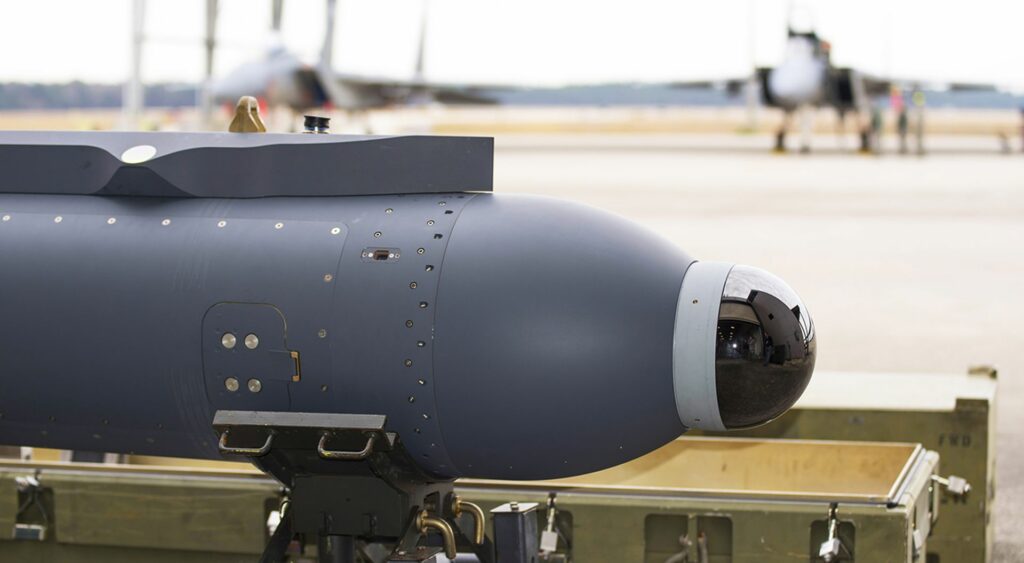
Credit: USAF
Eglin’s Integrated Test Team (from Eglin Air Force Base in Florida) conducted the first-ever multi-platform operational test to effectively locate a target using shared IRST sensor data on 7 April 2022. An F-15C and F-16D, both Legion/IRST21 equipped, were then able to share that sensor data over the pod’s Advanced Data Link (ADL) to passively triangulate target position without the use of radar or other active ranging sources. The pod’s common interface allows integration onto any aircraft with minimal to no impact on the aircraft’s core software. This versatility opens the door for integration with minimal effort onto other fighter aircraft such as the USAF’s newest ‘conventional’ fighter, the F-15EX. The Eglin team’s eventual goal is to provide this capability to anyone carrying an ADL Legion pod, regardless of platform. To verify this, a first successful two-ship F-15 IRST ADL test occurred in April 2021 and the first successful two-ship F-16 IRST ADL in December 2021. So far, Lockheed Martin is due to produce more than 130 systems.
The other US giant is also involved. In late 2022, the US Navy’s Naval Air Systems Command asked Boeing to procure 19 ASG-34A(V)1 IRST pods to enable Navy F/A-18E/F jets to detect, track, and attack enemy aircraft with a within visual range (WVR) limit of no more than 40 km, without making its presence known. The USD 43.5 M order includes the supply of 15 IRST pod spare parts, 34 fuel tank assemblies, 34 sensor assembly structures and special tooling, non-recurring engineering, sustainment support and data. Boeing will carry out the work in St. Louis and should be finished by April 2026.
TALIOS
The Rafale F3R fighters operated by the French Air Force and Navy currently use two types of pods: Damocles, which entered service in 2010, for engaging ground targets, and the newer TArgeting Long-range Identification Optronic System (TALIOS) for various functions including IRST, since 2020. French manufacturer Thales produces both.
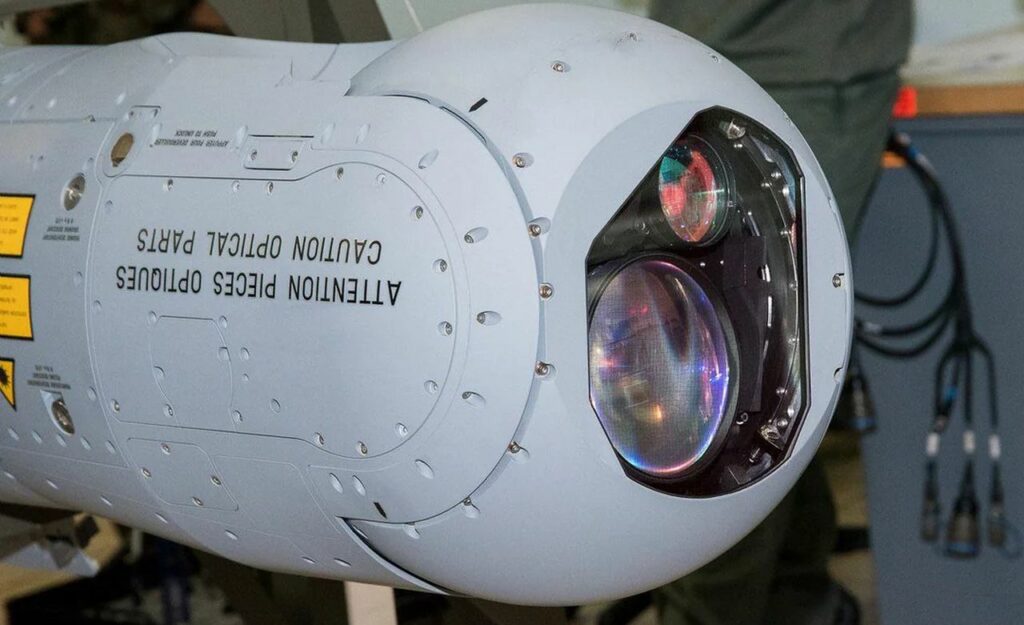
Credit: Armée de l’air et de l’espace
The French Directorate General of Armaments (DGA) announced that the TALIOS pod, which are able to capture HD video, will be integrated with the Rafale F4.2 standard and Mirage 2000D RMV. Equipped with this pod, the Rafale covers the entire spectrum of intelligence, acquisition, tracking and target designation missions, by providing images in the near-infrared and infrared domains. It also has new, more efficient fixed or moving target tracking capabilities against ground and aerial targets, an automatic detection capability for moving targets and a new man/machine interface.
A total of 67 TALIOS pods have been ordered; as of late 2022, 36 are still to be delivered, by 2025. In February 2023, the Hellenic Air Force General Staff received Thales representatives to negotiate a deal for TALIOS pods for the Hellenic Air Force’s new Rafale fleet. As the F4 variant will also be operated by the United Arab Emirates (UAE) and Indonesia, the TALIOS pod could well be used by these nations too, while at the recent LIMA trade show in Malaysia, it was heard that the Malaysian Air Force (TUDM) is also discussing this option for their Su-30MKM upgrade. Malaysian Sukhois are currently using the Damocles targeting pod.
ASELPOD
Turkish defence electronics specialist ASELSAN has the new ASELPOD multirole optronic targeting system in its portfolio. It has been tested on TuAF (THK) F-4E/2000 and F-16s, with ASELSAN having already signed contracts.
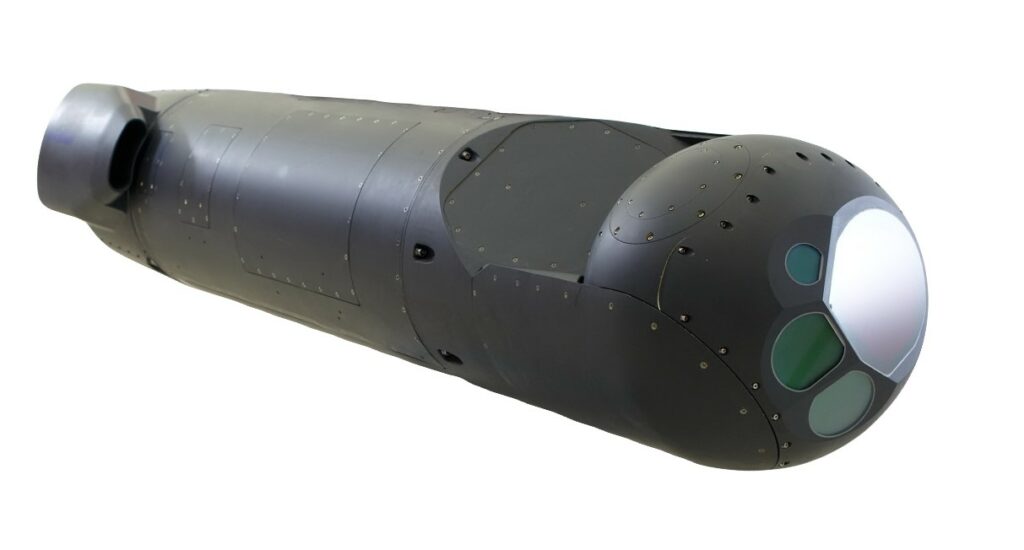
Pakistan is one customer, having signed a USD 25 M deal for eight ASELPODs to equip their Sino-Pakistani JF-17 Thunder jets. Another recent customer appears to be Iraq, which fits into a recent release by the Turkish firm mentioning a USD 31 M contract in September 2022, as well as a recent sighting of trials on an L-159T2X testbed at the Czech AERO Vodochody facility.
Georg Mader



